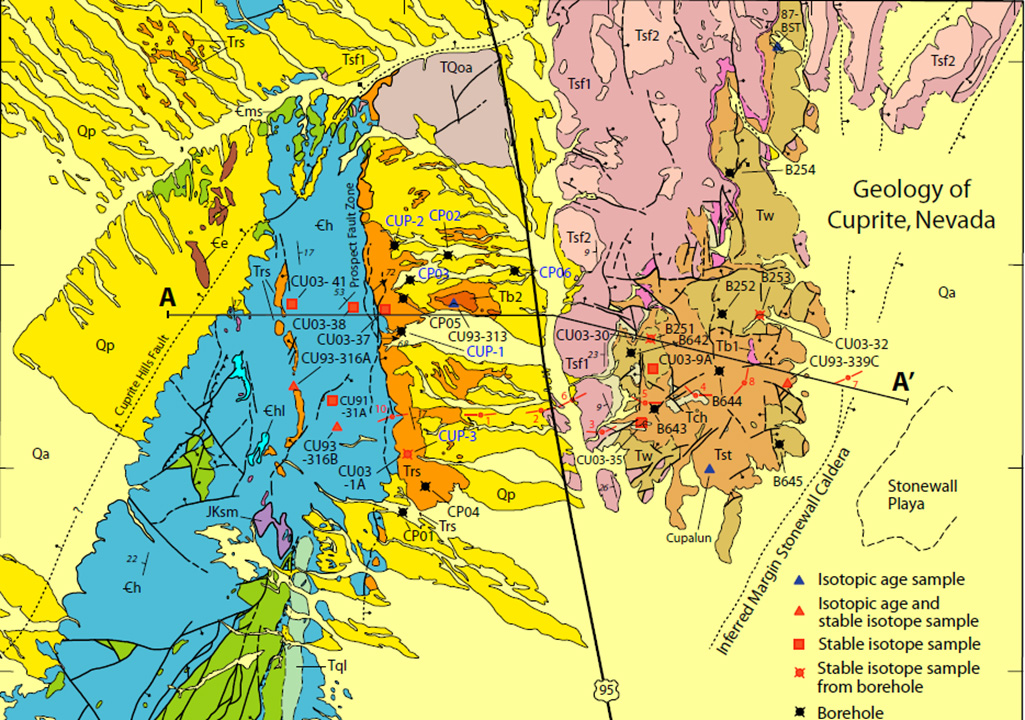
Image Source:
Swayze, G.A., R.N. Clark, A.F.H. Goetz, K.E. Livo, G.N. Breit, F.A. Kruse, S.J. Stutley, L.W. Snee, H.A. Lowers, J.L. Post, R.E. Stoffregen, and R.P. Ashley, 2014, Mapping advanced argillic alteration at Cuprite, Nevada using imaging spectroscopy: Economic Geology, v. 109, no. 5, p. 1179-1221. doi: 10.2113/econgeo.109.5.1179
pubs.er.usgs.gov/publication/70196084
The United States depends on a variety of raw, non-fuel materials known as “critical minerals” to manufacture products
considered essential to national security.
The Energy Act of 2020 called for the United States Geological Survey (USGS) to assess all critical mineral
resources in the U.S. In addition, the Bipartisan Infrastructure Law called on the USGS to assess potential
critical mineral resources in mine wastes. These assessments can quantify potential mineral sources from
existing domestic mines – whether historical or active – and help identify opportunities for economically
and environmentally viable resource development. Using traditional techniques, assessing all 50 critical
minerals would proceed too slowly to address present-day supply chain needs.
The Defense Advanced Research Projects Agency (DARPA) and USGS have partnered to explore the potential for
machine learning (ML) and artificial intelligence (AI) tools and techniques to accelerate critical mineral
assessments by automating key steps in the process.